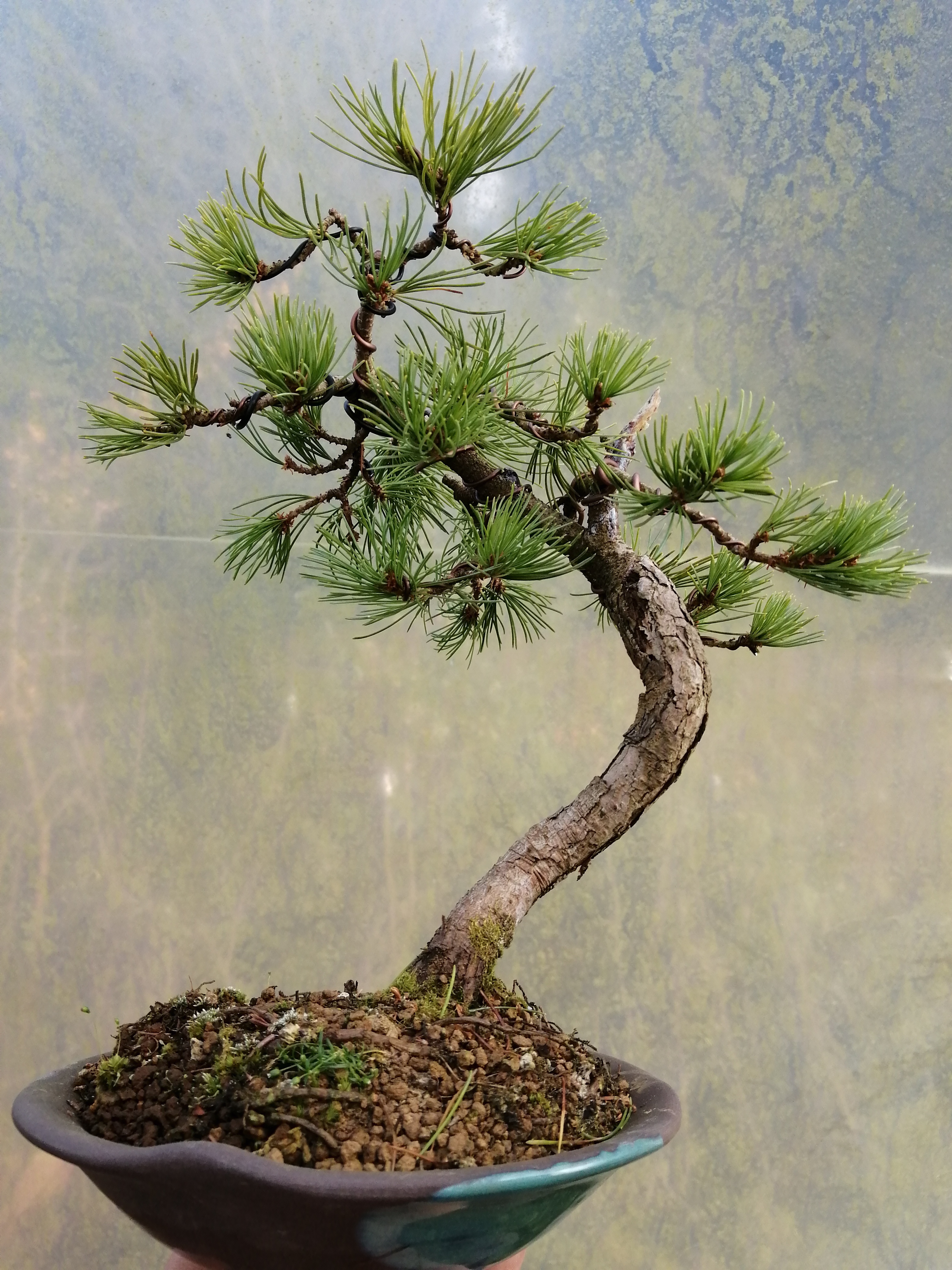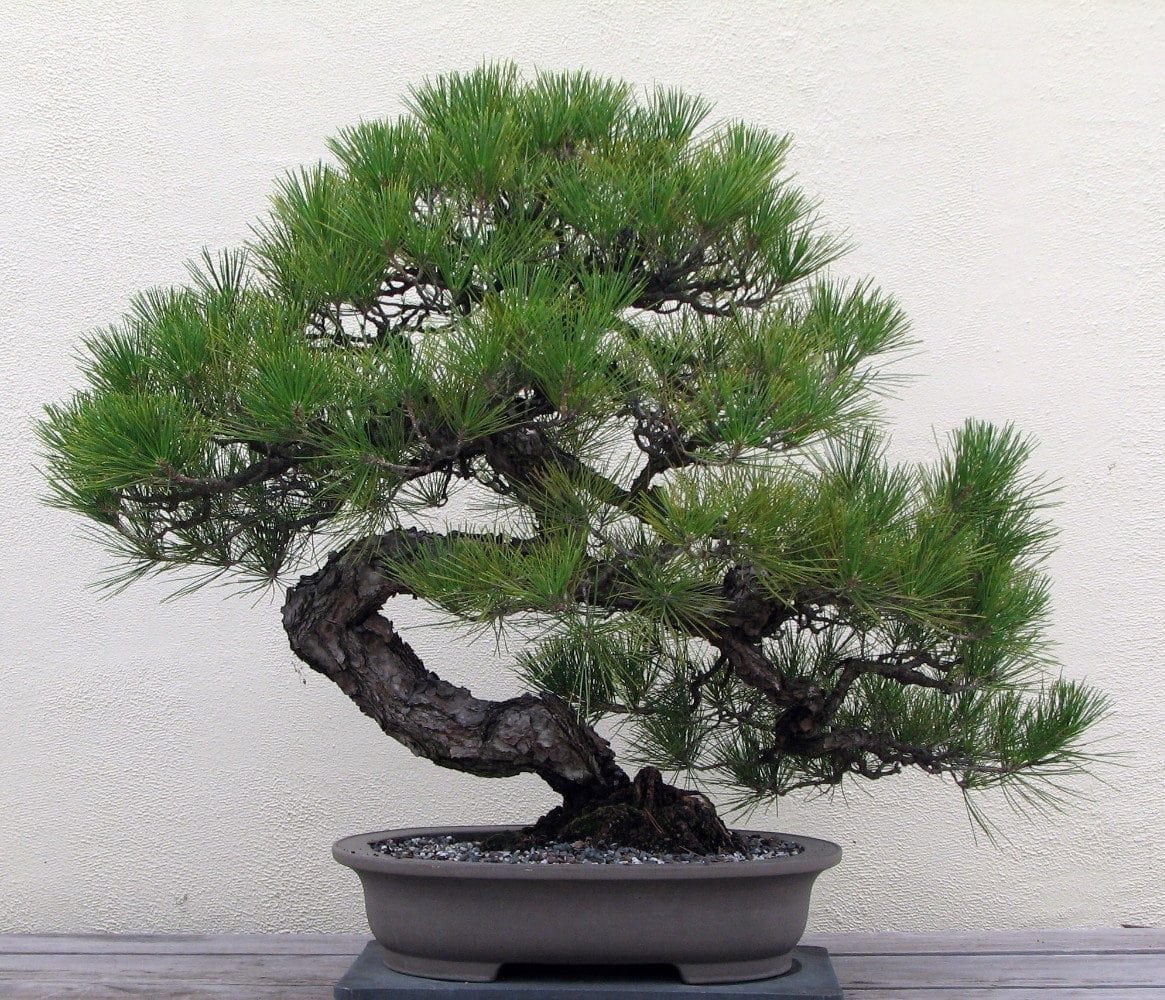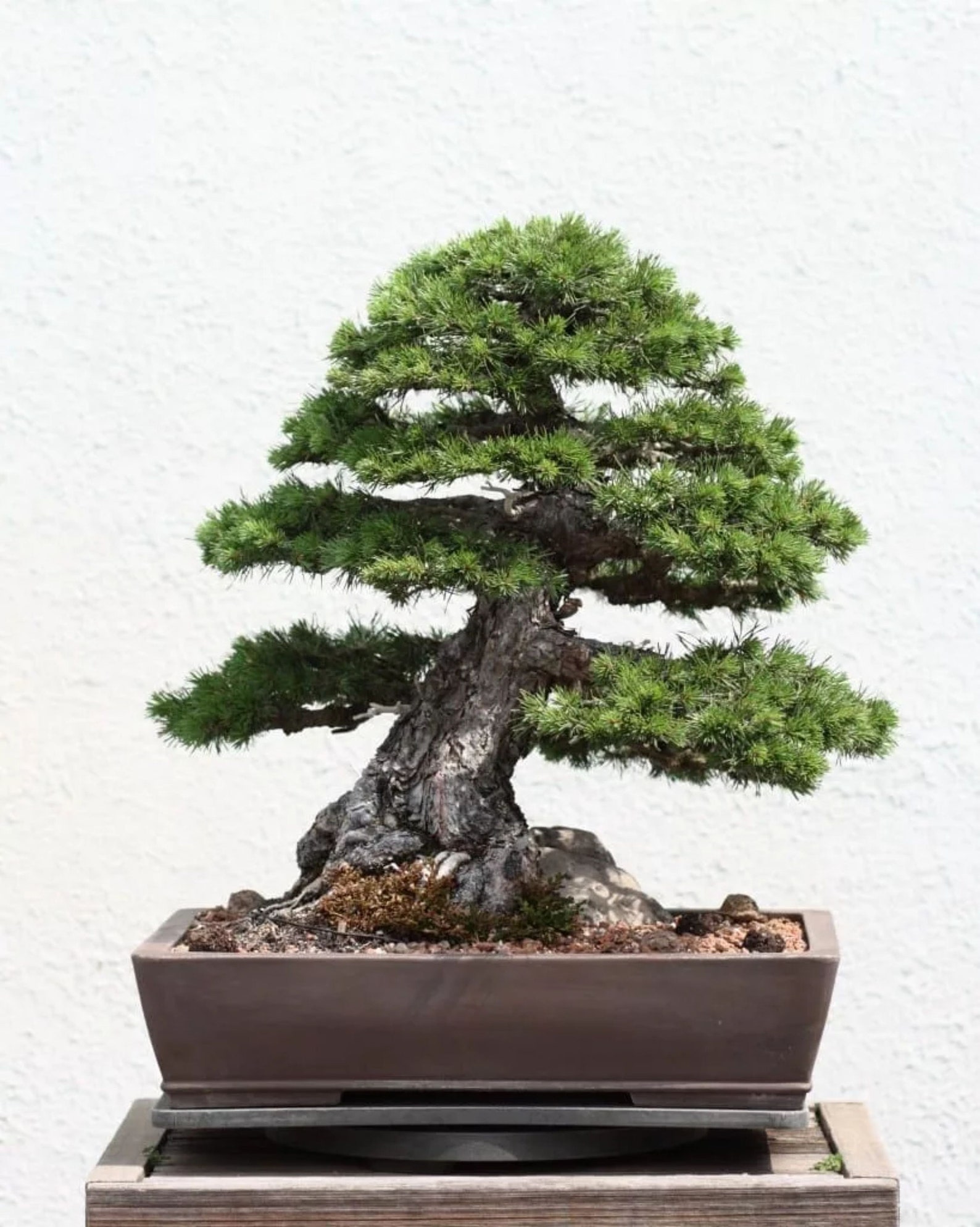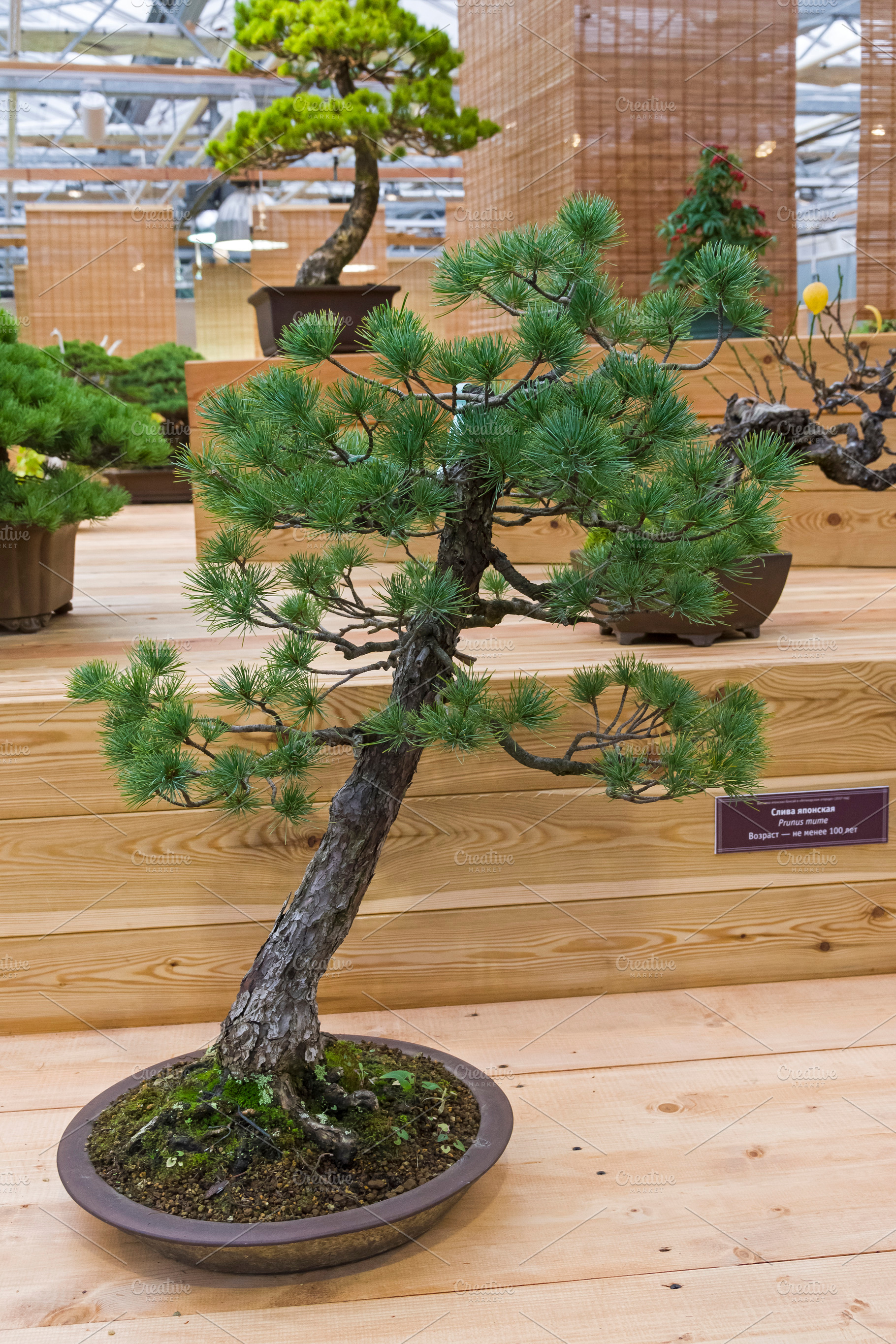/GettyImages-1066497052-56bcd3ceff6e41d9894053190427f2bb.jpg)
How to Grow and Care for Pine Bonsai
To bonsai a pine tree, you'll need to have a solid understanding of the type of pine you have. You also need to know how to wire your pine tree and prune its branches and needles in a way that keeps your pine healthy and thriving. Overall, to bonsai a pine tree, you need to follow these steps: Pick an appropriate pre-bonsai or nursery stock pine
:max_bytes(150000):strip_icc()/Bonsai-Pine-Tree-46265373c5e24989b99bfc3e78fe880f.jpg)
cabbage money forum types of bonsai trees Hardness Moss Estimated
The Best Pine For A Bonsai Tree Japanese black pine (Pinus thunbergii) and Japanese white pine (Pinus parviflora) are the best for pine bonsai because they can be shaped in any bonsai style, have beautiful needles throughout the year and have attractive rough, hexagonal bark. Table of contents Pine trees: general description

54 Pictures of Bonsai Trees (by Style and Shape)
No matter what, you can propagate your new Bonsai tree using a cutting from a pine tree of your choice, no more than five inches long. Make sure to take your cutting using clean and sanitized shears. Remove the piece of branch in the summertime at a 45-degree angle and prepare a small pot with Bonsai soil.

Japanese White Pine Bonsai Tree (38) Shoka Bonsai
Pine bonsai trees, whilst beautiful, are notoriously challenging and are definitely not for the inexperienced novice. The trees are very taxing, and you should gain experience with easier trees before nurturing and training a pine bonsai tree. Included in the one flush category are the white, Scots, ponderosa and mountain pine bonsai.
Bonsai Japan Japanese white pine
August 15, 2021 Care Guide For Pine Bonsai [2021] Table of Contents Care Guide For Pine Bonsai [2021] Types of pine bonsai trees and pine bonsai care Pinus aristata bonsai Pinus aristata bonsai tree care Japan Black Pine bonsai Japanese Black Pine tree care Chinese Yellow Pine Tree bonsai Chinese Yellow Pine tree care Chinese White Pine

Growing Japanese Black Pine Bonsai from Seed
Some of the most common bonsai pine tree types include Japanese Black Pine, Japanese White Pine, Scots Pine, and Mugo Pine. Japanese Black Pine Japanese Black Pine Bonsai Tree Japanese Black Pine ( Pinus thunbergii) is a popular choice for bonsai because of its strong trunk, irregular branching patterns, and striking appearance.

Pine Bonsai Trees Bonsai Tree Gardener
Types of Bonsai Pine Tree. There are several types of pine trees that you can grow for bonsai. In fact, the Pinus genus is home to more than 100 different species! Not all of these species are equally well-suited for bonsai growing, though. Pine bonsai trees can be categorized as one-flush or two-flush trees.
:max_bytes(150000):strip_icc()/growing-pine-bonsai-5085311-hero-1949cdd024584519b85caa408e26d580.jpg)
How to Grow and Care for Pine Bonsai
Bonsai pine trees, with their intricate roots, budding branches, and cultural significance, are not your typical plants. Originating in China and Japan, these flush pines have gained global popularity as living artworks that symbolize patience, harmony, and balance across cultures and generations.

Japanese White Pine Bonsai Plant seed silver pine California Etsy
This plant is a Japanese white pine, also known as the Pinus parviflora. It is about 5 years old and it was purchased in a Bonsai store for around $50 US. We use a thick wire to bend the trunk, and stick one end of the wire into the root mass as anchor. Next, we wire the main branches of the tree.

5 Incredibly Beautiful Pine Bonsai Trees [With Photos]
This pine has soft, five-centimeter-long, needle-like leaves. They are fragrant and grow in bundles of five and are green-blue on the top and blue-white on the bottom side. They can stay on the tree for 4-5 years. The bark is grayish and deeply fissured or peels off into scales. It is thin and can be damaged easily.

White pine bonsai Redwood Bonsai, Pine Bonsai, Bonsai Art, Bonsai Garden, Bougainvillea Bonsai
Pine bonsai trees are evergreen, and they are coniferous resinous or cone-bearing trees with cones and needles appearing in bundles of 2 to 5. Pines can grow in various shapes in nature, so they can be creatively shaped in any style Bonsai is famous for. Pine bonsai trees are Japan's classic type of bonsai, maintaining them for many generations.

Pine Bonsai Trees Bonsai Tree Gardener
A pine tree bonsai is a miniature version of a pine tree that has been carefully cultivated and shaped over time to fit into a small pot or container. The art of creating bonsai involves pruning and training the tree's branches and roots while controlling its size, all with the goal of creating an aesthetically pleasing living sculpture.

FileJapanese White Pine bonsai 81, October 10, 2008.jpg Wikimedia Commons
June 14, 2022 June 1, 2023 It's no surprise that pine trees are very popular in bonsai cultivation, and many people even consider them the most common kind of bonsai. Unlike most bonsai trees, pine bonsai trees are evergreen, resinous, or cone-bearing conifers with needle and cone bundles of 2-5.

Bonsai tree Japanese white pine HighQuality Nature Stock Photos Creative Market
01 of 16 Juniper (Juniperus spp.) Loren Klein / Getty Images Juniperus is a large genus of over 50 evergreen coniferous trees and shrubs that are popular as bonsai trees. All species of juniper can be successfully grown as bonsai. Junipers are popular as bonsai for two main reasons.
:max_bytes(150000):strip_icc()/growing-pine-bonsai-5085311-02-a7f5ae74b25b4e45b06d74cdf6b55f81.jpg)
How to Grow and Care for Pine Bonsai
Placement. Like most pine trees, an eastern white pine bonsai should remain outdoors all year long. It must stay cool or cold during the winter (about 3 months), but should be protected from harsh freezes. In the late fall, protect your tree by burying your tree, or mulch over the pot in the ground. The tree should be protected from strong wind.

How To Grow Japanese White Pine Bonsai Trees Grow A Bonsai Tree Pine bonsai, Bonsai forest
Pine bonsai trees require consistent moisture but cannot tolerate waterlogged conditions. As a general rule, make sure to water when the top inch or two of soil feels dry, ensuring the bonsai remains hydrated without overwatering The Spruce. Fertilization.